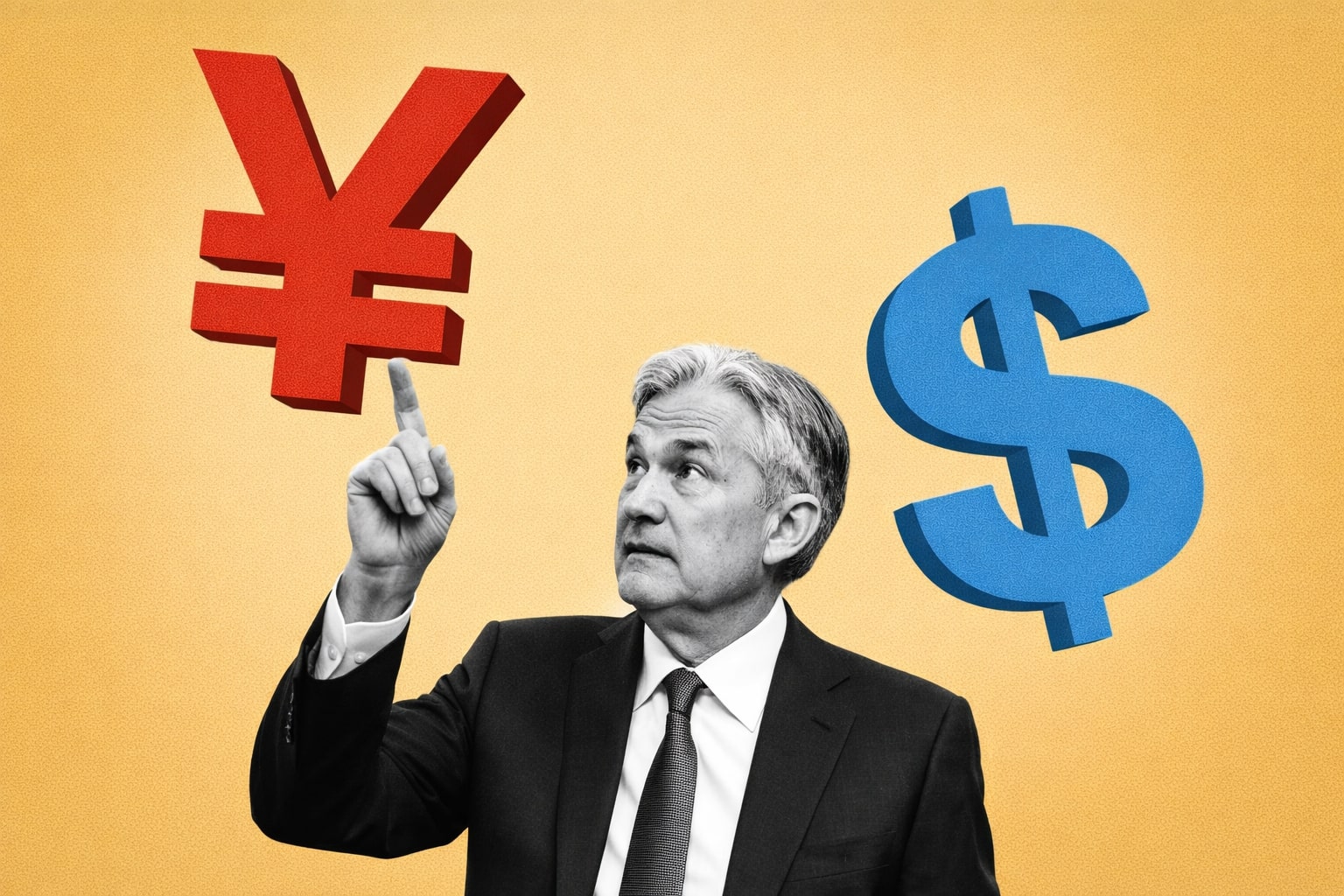
US Dollar Outperforms as Market Focus Shifts: Q2 2023 Financial Review
Q2 2023 economic landscape featuring hawkish measures from the Federal Reserve, resilience in labor and stock markets, underperforming crude oil prices, and US oil production trends | That's TradingNEWS
The U.S. Dollar demonstrated a sturdy performance in Q2, eclipsing most of its major counterparts, with significant gains against the Japanese Yen and Australian Dollar. Interestingly, the British Pound maintained its stance, and the Euro successfully defended against pressure from the globally most liquid currency. In the same period, financial markets started shifting their focus to anticipated hawkish measures from the Federal Reserve. By July, all expectations for a rate cut from the central bank this year were factored out.
Traders included nearly four rate hikes between June 1st and July 7th in their outlooks. However, the markets have not entirely priced back in hawkishness since the collapse of the Silicon Valley Bank. Compared to the status before SVB's downfall in early March, financial markets are currently more dovish about the Fed's one-year horizon outlook as of July 7th. Despite this, short-term bets have turned more hawkish, indicating more room for markets to recuperate long-term hawkish bets post-SVB's fall.
Surprisingly, the market tightening and rising Treasury yields have hardly deterred stock market enthusiasts. With a nearly +40% surge, the first half of 2023 was the best for the tech-heavy Nasdaq 100 since the late 1990s. Concurrently, the S&P 500 also rallied close to 16%. However, it is essential to note that the stock market recovery's breadth has been underwhelming, with a small group of mega-cap firms leading the way.
The U.S. labor market exhibited resilience while underlying inflation grappled with declining noticeably. June's non-farm payrolls report showed that wage growth came in higher than expected, likely displeasing Fed Chair Jerome Powell and his team, paving the way for potential further weakness in gold. XAU/USD slipped 2.5 percent in the second quarter.
Elsewhere, Q2 saw crude oil prices underperform despite OPEC+'s attempts to slash production. Major central banks worldwide are collaborating to decelerate their economic engines, intending to suppress domestic consumption. As global growth expectations and Chinese exports slow down, crude oil appears to follow suit.
Particular attention remains on how central banks will proceed amid persistent price pressures and potential damage to domestic demand and labor markets. While Treasury yields continued their upward trend, yield curve inversion still exists, which could indicate impending economic discomfort. U.S. oil and gas production maintained an upward trend until April, a delayed response to very high prices in mid-2022 after Russia invaded Ukraine.
The slump in prices and drilling rates from late 2022 is expected to decrease output in the second half of 2023, thereby tightening markets for oil and gas later this year and extending into 2024. Data from the U.S. Energy Information Administration (EIA) showed crude and condensates production from the Lower 48 states, excluding federal waters in the Gulf of Mexico, rose by 37,000 barrels per day (bpd) in May compared to April. The production increase was 986,000 bpd (+10%) compared to the same month a year earlier.
As per previous trends, U.S. production responds to price changes with an average lag of approximately 12 months. Hence, near-record output in April 2023 reflects the extraordinarily high prices in Q2 2022. Inflation-adjusted U.S. crude futures prices averaged $108 per barrel in April 2022, reaching a peak of $120 in June 2022. These prices fell to $78 in December 2022 and merely $70 in June 2023.
In response to the decline in prices, the number of rigs drilling for oil and gas fell from an average of 780 in December 2022 to 687 in June 2023, per data from Baker Hughes, an oilfield services firm. The decreased rig count is expected to lead to a downturn in Lower 48 production in Q3 2023 and continue to decline at least until Q1 2024.
Assuming no global recession, the reduced or negative growth from the Lower 48, combined with announced cuts by Saudi Arabia and its OPEC+ allies, will likely diminish global inventories later in 2023 and early 2024. Interestingly, OPEC+ cuts could stabilize crude prices at a higher level, alleviating some pressure on Lower 48 producers and maintaining their output at a higher level.
On the gas side, dry production reached 3,063 billion cubic feet (bcf) in April 2023, a nearly 6% rise from April 2022. Total production in the year's first four months reached a record of 12,239 bcf, up 7% from the same period a year earlier. Gas production is also a lagged response to high prices during the second and third quarters of 2022.
As the real terms reveal, monthly average futures prices peaked at over $9 per million British thermal units in August 2022 but dropped to less than $2.50 in June 2023. With gas production growth throughout the second quarter, the U.S. Dollar demonstrated a robust performance, outpacing a majority of its significant counterparts. The currency exhibited notable gains against the Japanese Yen and the Australian Dollar. While the British Pound could withstand the pressure, the Euro also resisted the world's most liquid currency.
These developments were primarily influenced by the shift of financial markets' focus on hawkish expectations from the Federal Reserve. As of early July, the prospects of a rate cut from the central bank this year have been ultimately dismissed. From the beginning of June until July 7th, market traders have factored in almost four rate hikes to the forecast. However, even though market perceptions have favored a hawkish stance, it has yet to return to full strength since the downfall of Silicon Valley Bank.
Contrasting the period before SVB's collapse and the beginning of March, the financial markets are still considerably dovish regarding the Fed outlook for the one-year horizon as of July 7th. Nevertheless, short-term forecasts have taken a more hawkish turn. This suggests the market could recover its long-term hawkish bets since SVB's fall.
Surprisingly, this tightening and the ensuing surge in Treasury yields have barely affected the stock market bulls, and with an almost 40% increase, the first six months of 2023 marked the best performance for the Nasdaq 100 since the late 1990s. This was accompanied by the S&P 500 rallying almost 16%. However, the breadth of the stock market recovery has been lackluster, with a small number of mega-cap firms spearheading the upward trajectory.
The U.S. labor market has proven its resilience, and the underlying inflation has had difficulty making any significant downward shift. The June non-farm payrolls report disclosed that wage growth exceeded expectations, which could invite the displeasure of Fed Chair Jerome Powell and his team, potentially triggering further weakness in gold. Consequently, XAU/USD dropped 2.5 percent in the second quarter.
On another front, Q2 witnessed crude oil prices taking a hit despite several attempts by OPEC+ to curtail production. Central banks worldwide have been almost synchronized in their efforts to slow down their economic engines to suppress domestic consumption. This tactic, coupled with slowing Chinese exports and global growth expectations, has contributed to the descent of crude oil prices.
All attention is now focused on how central banks will navigate in light of stubborn price pressures and the potential harm that could be inflicted on domestic demand and labor markets. Although Treasury yields continued their upward climb, yield curve inversion persists, potentially foretelling economic hardship ahead.
While all this was happening, U.S. oil and gas production saw a steady rise through April, a belated reaction to the skyrocketing prices in mid-2022 following Russia's invasion of Ukraine. However, the fall in prices and drilling rates from late 2022 is predicted to slash output in the second half of 2023, tightening markets for oil and gas later this year and into 2024.
Despite this, U.S. petroleum production is on pace for a record-breaking year, ensuring the stability of energy prices even amidst the endeavors of Saudi Arabia and other major oil exporters to push them upwards. U.S. crude output until April has risen 9% from the previous year, a surprising trend given the sliding oil futures and signs of the country's shale boom reaching its peak.
After the price crash 2015, U.S. producers reengineered their operations to become more efficient, primarily through engineering-based gains and extensive staff and cost reductions. In tandem, the persistence of primary producers and smaller private companies reaping the rewards of a drilling surge when oil prices were higher have contributed to this upward trend.
Another critical factor aiding the stabilization of prices is increased production efficiency. The advancements since 2014 have reduced the cost of drilling and fracking in the U.S. shale patch by 36%, as reported by J.P. Morgan, even while the volume of recovered oil has increased. This improved efficiency has allowed companies to remain profitable even when oil prices are on a downward trajectory.
Furthermore, the U.S. Energy Information Administration projects that U.S. crude oil production will rise to a record 12.61 million barrels per day in 2023 from 11.89 in 2022. This boost in production indicates a potential weakening in the pricing power of the OPEC oil cartel, despite its attempts to reduce supply.
Amidst these developments, the Euro has witnessed a mixed performance in Q2, primarily due to the tightening of financial conditions resulting from higher interest rates. Germany, the largest economy in the eurozone, fell into a technical recession in Q1, a fate shared by the Euro itself. The elevated prices strained household incomes, reducing economic activity during a global growth slowdown.
The Bank of Japan's ultra-dovish monetary policy stance remained consistent in the East. Unlike major central banks worldwide that have launched aggressive tightening campaigns to curb inflationary pressures, the Japanese institution has maintained its short-term interest rate steady at -0.1...as the Reserve Bank of Australia (RBA) and the Federal Reserve began to diverge in their respective monetary policies.
Throughout 2022, the Federal Reserve remained committed to its hawkish policy trajectory while the RBA took a different approach. Owing to the lower-than-expected inflation and muted wage growth in Australia, the RBA lowered interest rates to record lows, much to the chagrin of global investors. This led to a sell-off in the AUD/USD currency pair, with the team weakening from 0.78 at the start of the year to the current 0.69, contributing to the U.S. Dollar's strong performance in Q2.
On the other hand, the Federal Reserve was keen to curtail inflationary pressures that were surging in the U.S. The dollar index (DXY) gained ground during Q2, supported by ongoing inflation and an anticipated interest rate hike. The non-farm payroll report for June revealed a surprise rise in wage growth, further pushing the Fed to adopt a more hawkish stance and thus strengthen the dollar. In response to the Federal Reserve's firm stance, traders increased their rate hike expectations from June 1st to July 7th, pricing approximately four rate hikes in the coming months.
However, it is worth noting that the markets have yet to fully return to a hawkish stance since the Silicon Valley Bank (SVB) collapse. Financial markets remain more dovish on the Fed's outlook for the one-year horizon as of July 7th compared to the start of March and before SVB's downfall. Yet, near-term bets have shifted towards more hawkish expectations, suggesting that there is room for the market to recover long-term hawkish bets since SVB's fall.
Despite tightening monetary policy and the surge in Treasury yields, stock market bulls remained unfazed. The tech-heavy Nasdaq 100 soared by almost 40% in the first half of 2023, marking its best performance since the late 1990s. Concurrently, the S&P 500 rallied close to 16%. However, the breadth of this stock market recovery has been narrow, with a few mega-cap firms primarily driving the surge.
While the U.S. dollar was performing impressively, the Euro resisted the pressure from the greenback, maintaining its position against the world's most liquid currency. On the other hand, the British Pound stood its ground, marking a solid performance against its major counterparts.
But the landscape was unique across the globe. The Bank of Japan (BoJ) notably maintained its ultra-dovish monetary policy stance. Even as central banks worldwide launched aggressive tightening campaigns to curb inflationary pressures, the BoJ stood still, holding its short-term interest rate at -0.1% and its yield curve scheme untouched. The BoJ has shown no signs of changing course shortly, further widening the policy divergence among global central banks.
Meanwhile, in the commodities market, the story was one of variance. Despite attempts from OPEC+ to cut production, crude oil prices struggled in Q2. Major central banks worldwide worked in sync to slow their economic engines, a move intended to curb domestic consumption. As a result, Chinese exports began to slow, alongside global growth expectations, taking crude oil prices lower.
The U.S. energy sector, however, tells a different story. Amid declining crude prices, the United States has sustained increased production. According to data from the U.S. Energy Information Administration (EIA), simple and condensate production from the Lower 48 states (excluding federal waters in the Gulf of Mexico) rose by 37,000 barrels per day (bpd) in May compared to April.
Moreover, U.S. petroleum production is projected to hit record-breaking levels this year, further bolstering energy price stability. Major US oil producers, such as ConocoPhillips, Devon Energy, Pioneer Energy, and EOG, demonstrated intense production levels in the first quarter. They also cut drilling and fracking costs by about 36% due to improved production efficiency, raising oil recovery volumes. Increased production efficiency in the U.S. has potentially reduced the influence of major oil exporters such as OPEC on global prices.
In the coming months, markets will closely watch the Federal Reserve's policy decisions, inflation figures, and other economic indicators, which could steer the course of the U.S. dollar. The persistent rise in Treasury yields also hints at potential economic pain. Ultimately, the global economic landscape in Q3 will largely depend on how central banks respond to sticky price pressures and the potential impact on domestic demand and labor markets.
That's TradingNEWS
Read More
-
QQQ ETF At $626: AI-Heavy Nasdaq-100 Faces CPI And Yield Shock Test
11.01.2026 · TradingNEWS ArchiveStocks
-
Bitcoin ETF Flows Flip Red: $681M Weekly Outflows as BTC-USD Stalls Near $90K
11.01.2026 · TradingNEWS ArchiveCrypto
-
Natural Gas Price Forecast - NG=F Near $3.33: NG=F Sinks as Supply Surges and China Cools LNG Demand
11.01.2026 · TradingNEWS ArchiveCommodities
-
USD/JPY Price Forecast - Dollar Breaks Toward ¥158 as Yen Outflows and US Data Fuel Dollar Charge
11.01.2026 · TradingNEWS ArchiveForex



















